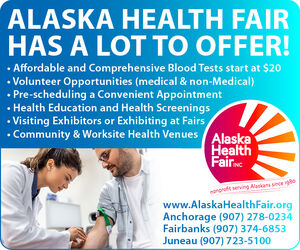COVID update: Testing, vaccines, fatigue
February 1, 2021 | View PDF
COVID testing time reduced to less than five minutes
A new COVID-19 test that reduces testing time from 30 minutes to less than five and delivers accurate results has been developed by researchers at the University of Birmingham in England. The researchers believe their method could deliver a test that is not only fast but also sufficiently sensitive. The test does not require samples to be treated at high temperatures, and it can be performed using standard laboratory equipment, making it readily deployable.
Professor Tim Dafforn from the University’s School of Biosciences said his team has designed a new method for testing that employs reagents used in existing point of care devices and meets the need for testing in high throughput, near-patient settings where people may be waiting in line for their results.
The most accurate COVID-19 tests currently in use require detecting viral RNA, and the most common of these use a technique called PCR (polymerase chain reaction). The PCR test is a two-step process. The new Birmingham test simplifies the method to a single step and uses an alternative amplification method called EXPAR (Exponential Amplification Reaction). This technique uses very short, single strands of DNA for the replication process, which can be completed in a matter of minutes.
The entire test can be run on standard laboratory equipment at lower temperatures compared to PCR tests, which require higher temperatures to separate out strands of DNA as part of the amplification process. The researchers hope that more rapid testing will allow for more people safely getting back to work and controlling outbreaks when they happen.
What to expect when you get vaccinated
Over the next several months, many older adults will be vaccinated against COVID-19 with one of two vaccines. Both vaccines that received Emergency Use Authorization from the U.S. Food and Drug Administration (FDA), the Pfizer-BioNTech and Moderna vaccines, are messenger RNA vaccines. They are not live viruses. Instead, they work by giving your body a blueprint to create a piece of the virus that causes COVID-19.
The vaccines were approved quickly and many people wonder if too many corners were cut. Dr. Mohammad Ali, who is an infectious diseases physician at Penn State Health Holy Spirit Medical Center, in Philadelphia, Pennsylvania, said advances in vaccinology and vaccine production allowed pharmaceutical companies to create vaccines in months. However, he said both vaccines followed rigorous FDA guidelines, including the normal regimen of clinical trials and Phase 1, 2 and 3 trials.
“Their effectiveness is tremendous,” said Dr. Ali. “The flu vaccine is typically 40% to 60% effective, and the COVID-19 vaccines are 94% to 95% effective.”
The Centers for Disease Control and Prevention (CDC) reports a limited number of incidents where people experienced a severe allergic reaction (anaphylaxis) or reaction such as hives, swelling or wheezing. The CDC recommends against people taking the vaccine who had a prior severe allergic reaction to any ingredient in the COVID-19 vaccine. People who have had allergic reactions to other vaccines should ask their doctor about taking the COVID-19 vaccine. People with non-vaccine related allergies (food allergies, pet allergies and seasonal allergies) are safe to get vaccinated, according to the CDC.
Currently, the CDC recommends vaccination even in people who have had COVID-19 in the past. This is because experts still do not know how long immunity to the virus lasts after someone is infected.
Further, it says you must continue to wear a mask, practice social distancing and continue to wash your hands after you are vaccinated. The vaccine protects you from getting sick with COVID-19, but researchers still don’t know if vaccinated individuals can still get infected and transmit the virus to others.
Don’t fall victim to ‘pandemic fatigue’
After more than 10 months of the COVID-19 pandemic, many of the messages about mask wearing and hand washing are starting to sound like background noise.
“People definitely have pandemic fatigue,” said Dr. Olusinmi Bamgbose, MD, who is a mental health expert and a psychiatrist at Cedars-Sinai Medical Center in Los Angeles, California. “I think people miss their families and miss doing what they want to do. I think they want their life to feel normal again, so they’re looking for ways to go and do that.”
Unfortunately, the data support that theory. In the last few months, hospitals all across the country have experienced an unprecedented increase in COVID-19 cases due to Thanksgiving and Christmas get-togethers, despite healthcare leaders’ pleas to avoid gatherings. In response, state and local authorities are cracking down, and that causes the general public to become even more frustrated.
“It can be hard for people to understand the medical decision-making that goes into these guidelines,” said Dr. Bamgbose. “It’s hard to reconcile the current restrictions. For example, the fact that outdoor dining at restaurants is now prohibited (in some cities and counties).”
While the changes in guidelines are based on the most up-to-date public health information, like prevalence rates of the virus in the community, Dr. Bamgbose said it can lead to people becoming confused as to which guidelines to follow. She said an issue is occurring called confirmation bias. “People tend to give more weight to their own experiences than they do to the experiences of others,” explained Dr. Bamgbose. She said this means that someone who engages in risky behavior, like attending a party, and doesn’t get sick, is likely to do that same behavior again. “It also means that if you have, for example, a friend who gets a mild case of COVID-19, you’re more likely to think along the lines of, ‘My friend had COVID-19 and she’s fine. I’m going to be fine, too,’” said Dr. Bamgbose.
She said peer pressure is a major issue now for people of all ages. Many of us have been pressured to push our boundaries when friends and family members ask you to come over and get together inside. If confirmation bias and pressure from friends and family are leading people to make risky decisions, and those risky decisions are leading to an increase in COVID-19 cases, is there a way to “hack” our own brains and break the cycle?
“One of the best things you can do is sit down and do a personal risk assessment and a personal inventory of what you feel comfortable with and what your boundaries are,” said Dr. Bamgbose. “Remind yourself of the reasons why you should be following the public health guidelines.” Those reasons, she said, could range from the very personal, like, “I don’t want to get sick,” and, “I don’t want to get my partner or child sick,” to more distant, like, “I don’t want to sicken someone else’s grandmother, who I may not even know.”
Dr. Bamgbose said age is an issue and that is playing a major role in the spread of the pandemic.
“Younger people are inherently more reckless,” said Dr. Bamgbose. “Their frontal lobe, which controls judgment, doesn’t develop fully until about the age of 25, so even without COVID-19, they tend to engage in riskier behaviors and are therefore at a higher risk of death from accidents, for example.”
With younger people generally at a lower risk of severe disease or death from COVID-19, Dr. Bamgbose said it can be hard to convince them not to gather in large groups. “They feel kind of invincible,” she said. “That’s not unique to COVID-19, it’s just kind of a young person’s mindset.”













